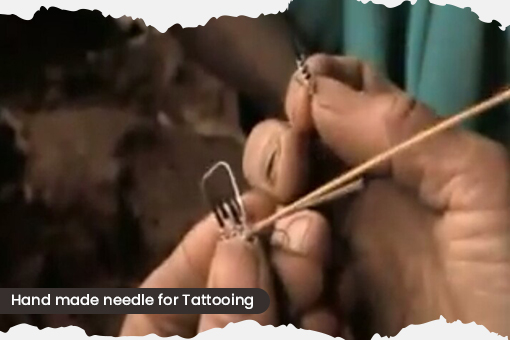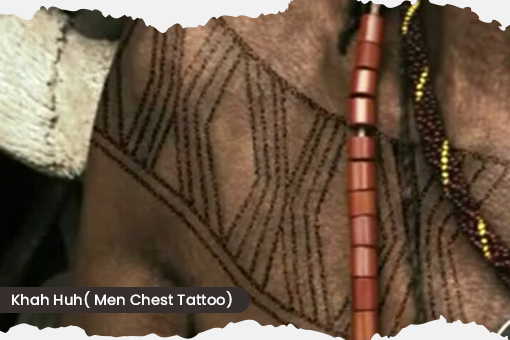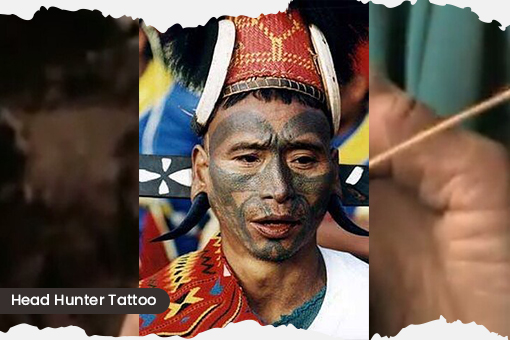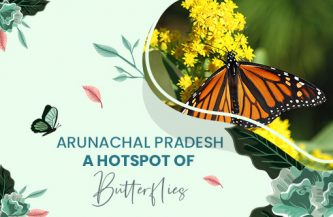Tattoo Culture in Wanchos of Arunachal Pradesh

In today’s generation, tattooing is considered to be a popular trend that is used as a form of expression or a style statement, and in some cases, it is also a sign of rebellion. The trend of getting ‘inked’ is particularly common among youths all across the world. But it is interesting to note that the art of tattooing dates back to ancient days.
It is not known when and where the first tattooing was done, but according to research done in the west, the art of tattooing has been around for the last 5000 years! However, the significance and form of tattooing in ancient times used to be very different from what it is now.
In the ancient age, tattooing was a common practice among some communities, often used for marking ceremonial rituals and rites of passage. Arunachal Pradesh is one such rich indigenous state which holds a rich history of tattoo culture. The tribes of Arunachal who were mainly associated with the art of tattooing were the Wancho, Apatani and Nocte.
The Wancho Community resides in the Eastern part of Arunachal Pradesh amidst the Patkai range and occupies the district of Longding. This is a tribe that followed a colourful & rich culture of traditions, rituals and adornments, including the practice of tattooing. Although the custom involving tattooing their body parts have subsided over time, the history behind it is still intriguing to this day.

Back in those days, men and women both had tattoos on their bodies. Each tattoo had a special and unique significance to its bearer and this practice was considered to be of social and ritualistic importance. One of the primary uses of tattooing was to define the status of each individual residing within a specific Wancho community in a village, apart from its use in other customary traditions.

The Wanchos followed the ‘Monarchy’ rule which still prevails today. The queen and her daughters of a Wancho community used to be marked with a special form of a tattoo on their back, revealing their status in society. Apart from the queen and her daughters, no other women in the community were marked with that particular form of a tattoo. On the other hand, the King along with his subjects ( men) were marked with a specific tattoo on their chest called, Khah Huh.

The Head-Hunters had their faces covered with a special form of tattoo extending the whole facial area, including the area surrounding the eyes. This tattoo was done before a head-hunter left for a hunting expedition. The facial tattoos were quite painful and took days to complete. Nonetheless, tattoos were considered a sign of Manhood.
Interestingly, only the village queens of Wancho communities could mark others with tattoos. It was believed that if men took the responsibility of marking tattoos on others, it would hinder their activities, such as fishing, hunting, etc.
Different patterns of tattoos on different body parts marked the attainment of different stages of life for both men and women. However, women were marked with more tattoos comparatively.

A Wancho man received his first tattoo at the age of eighteen, as a symbol of adulthood. This particular tattoo, locally known as Chuaku Huh portrays three small straight lines running horizontally across the shoulder. Whereas, a Wancho woman received her first tattoo at the tender age of ten on her navel, resembling a ‘+’ sign marked centrally across the belly. This tattoo is known as Sung Huh. Additionally, when the woman attained puberty, her calves were tattooed with a form called Thishen Huh, indicating her attaining the second stage of womanhood. Later when she left her parents’ home after marriage, she was marked with another tattoo on her knee, indicating her entering into the third stage. The fourth tattoo that a Wancho woman received was during her seventh phase of pregnancy or after the birth of her first child, above her chest. This is mostly how the Tattoo culture prevailed in a typical Wancho community, but it may have differed slightly from one Wancho village to another.
The ink used in marking tattoos among the Wanchos was prepared in a traditional method. They used to burn a specific set of trees called ‘Zing’ in Wancho language and mix its ashes with water to develop the ink. Thorns were then binded with sticks to prick the skin with ink for creating the desired tattoos.
But with the age of globalisation, the ancient tattoo culture of the Wanchos ceased to exist to keep up with the modern way of life. It is believed to have subsided during the 70s. The Wanchos are extremely proud of their rich traditions. Their earlier reputation as warriors and headhunters stems from many stories that are recounted by the elders in the community. The rich cultural heritage of the community needs to be recorded before these unwritten narratives are lost forever and sunk by the pressure of modern life.





